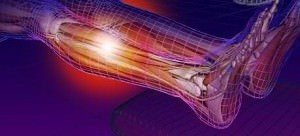

Apart from the legs, RSL symptoms are also experienced in:
- Arms.
- Face.
- Torso.
- Genitalia.
RLS symptoms are mostly experienced in the evening and at night and can therefore disrupt not only daytime activities but also sleep. The itchiness experienced in RLS symptoms is relieved – at least temporarily – by moving or applying pressure on the legs.
RLS symptoms: Epidemiology
RLS and RLS symptoms are seen in about 10% of adults in the US. These rates could be higher since Restless Leg Syndrome symptoms are commonly misdiagnosed. In fact, it is estimated that about 40% of trained health practitioners would confuse RLS symptoms with depression rather than a sleeping order.
RLS symptoms have been observed to run in the family. Studies show that about 50% of all cases of Restless Leg Syndrome are associated with the RLS gene. However, having the gene does not necessarily mean that the person will have RLS. The RLS gene needs to be coupled with the right environmental symptoms in order to produce the disease.
In the US and UK, Restless Leg Syndrome symptoms are seen in about 2% of children. In this particular study, it was observed that 70% of children presenting with RLS symptoms have at least one parent with the disease. In children, RLS is also associated with ADHD.
Only about 2% of the people with the condition experience severe or daily Restless Leg Syndrome symptoms. Caucasians are more predisposed than persons of African descent. The severity of the symptoms is increased in pregnancy and in iron deficiency.
Care should be taken so as not to confuse RLS symptoms in children with growing pain or general restlessness that is common growing kids. RLS affects more women than men and can begin at any age. However, the seriousness of the symptoms tends to increase with age.
More Restless Leg Syndrome Symptoms
- Tingly, creepy, itching, pulling, or pain in the legs.
- Quick or sudden relief when the feet are moved or pressure is applied.
- Insomnia.
- Daytime sleepiness.
- Drowsiness.
- Lateness.
Primary RLS symptoms are described as idiopathic is the cause is not known. Primary Restless Leg Syndrome occurs before the age of 40 and the symptoms can disappear for months or even years before they reoccur. The frequency of the symptoms increases with age. Secondary Restless Leg Syndrome symptoms occur after the age of 40 and are associated with drugs.
What are the possible causes of RLS?
- Genetics.
- Side-effect of drugs such as withdrawal from drugs such as opium.
- As a side-effect of an underlying condition such as kidney or liver disease.
RLS symptoms: Coping Tips
- You should resist the urge to not tell your friends, family, and workmates about the condition.
- Understand the symptoms and when they are most severe so as to sleep when the itchiness is low.
- Take up yoga or other such activities late in the day.
- Take iron supplements.
There is a drug that can be prescribed to you so as to minimize Restless Leg Syndrome symptoms. These drugs include:
- Dopaminergic antagonist.
- Opiates.
- Benzodiazepines.
